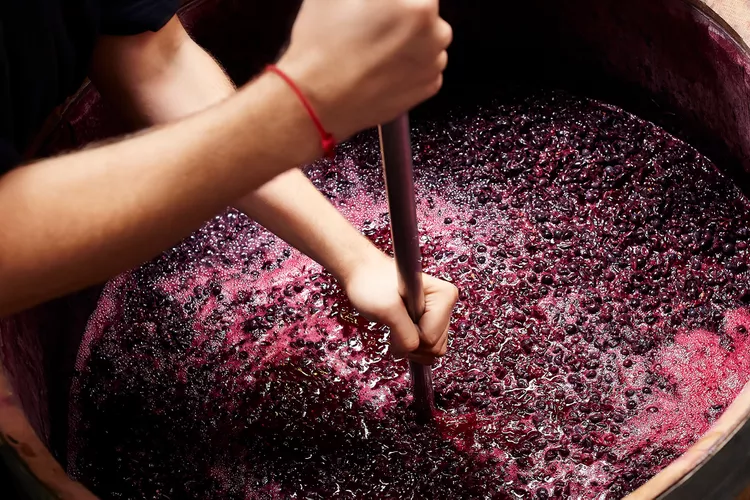Natural Wine Resistance: Dispel it
Style-seizing wine lists are more straightforward than the old idea of gassy, smelly glasses.
I must resist the urge to interfere when someone refuses to drink a particular style or wine. The experience of tasting each glass of Chardonnay reveals the subtleties in it. While natural wines may appear off-the-chart at first, the key is to resist interference, no matter how cloudy the result.
What is Natural Wine?
Natural wine is a natural product. No artificial additives have been used in the winemaking or grape-growing processes. Natural winemaking is a way to express wine’s essence without any interference. It’s open for interpretation.
The human hand has manipulated wine in many ways, from its flavor to its appearance, through mass production, conventional filtering, fining, and degassing. It’s essential to understand and appreciate what needs to be done. This includes viticulture without herbicides or pesticides and winemaking without the 50+ additives approved in Europe and America.
All natural wines are produced from organic or biodynamically-grown grapes typically harvested by hand. Natural wines can have low or no sulfites (10 and 100 parts per million, instead of the maximum 350 ppm) to prevent oxidation as they are bottled.
The wine may be cloudy or contain sediment if not filtered and clarified. It can be earthy, effervescent, and wild. It is also unpredictable and enjoyable. Experts and enthusiasts use terms ranging from true, raw, and unadulterated to describe the wide range of wines that fall under this category. They may be hazy or funky; they could even be sour.
What it Isn’t
It’s not official outside France. There are many different wine designations for quality, origin, and aging classification. Only France has made vin méthode nature a governed label with a 3-year trial.
Some wine shops and lists will indicate sustainable, biodynamic, natural, or organic bottles. They may use colors or symbols similar to kosher or Vegan notations. Look for ladybugs and green tags in Manhattan’s East Village at Urban Wines and Spirits and at Liquor Up & Wine Down in Gramercy.
Natural wines are no healthier or better than conventional wines, but curious consumers can still explore them like any other style. Consider comparative or blind tastes and evaluate aroma, appearance, and body. There’s no scientific evidence that sulfites cause hangovers. So, natural wine is not a cure. Honey may not have the same effect as processed sugar packets, but you might feel better after a reasonable consumption.
Wine does not have to be intimidating. Natural wine is simple, just as chefs are devoted to a simple preparation that lets seasonal produce shine. Restraint is revered. To conjure up the image of ancient techniques, a wine shop expert in New York’s Grand Central Station described a natural winemaker recently as “so primitive that they don’t even have electricity.”
The term’ natural wine’ and the notion of respecting nature are not exclusive to this abstract style (though natural fizzy wines can be distinct. This abstract style and the concept of living wines are not complete. Fizzy natural wine can be vibrant. Winemaking can also have intentionality, just as sustainability. All makers have stories to tell, and tasting is an interpretation.
What It Was
Around 6,000 BC, the Georgians began natural winemaking by burying grape juice. Various influences are credited with the modern shift away from machines and manipulation because of the ambiguous style. Randy Caparoso, a wine expert from California, credits California wine merchant Kermit Ligh for his terroir advocacy during the 1980s. However, “natural” refers to small producers who return to their roots intentionally in Berkeley and were first used in 2007.
Kevin Zraly, the world-renowned wine educator, doesn’t mention natural wines in his “Complete Wine Course.” And like many other old-school wine experts, Zraly uses quotation marks to finally refer to “natural” wines in a Facebook post from 2021: “These wines remind me of the saying “what’s new is old again,” with small, artisanal wine producers shaking up wine with their “old-style winemaking” of returning the earth and not intervening with nature.
Ray Isle, our expert, trusts Alice Feiring, the author of “Natural Wine for the People,” one of the pioneers behind what is often called a movement. Like chefs who have spent years researching umami, natural winemakers also experiment with fermentation. The temperature, time, and other conditions affecting fermentation can differ for anything from homemade mead to stinky cheese.
Costador ferments a black, indigenous grape called Sumoll in ancient clay amphorae. AmByth Estate in Paso Robles still crushes the grapes with their feet and ages them in terra-cotta or clay vessels. Les Capriades in France disgorges Petillant Natur (natural bubbly) wine “ala volume” to eliminate sediment.

